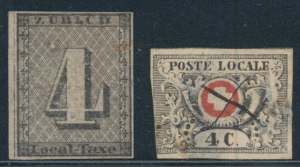There is nothing more exciting for a collector than to complete a collection of stamps and Kionga makes it about as easy as it gets. There were only four stamps issued in the entire history of the country and they sell for about $50. Kionga is a tiny scrap of real estate on the east coast of Africa between the German colony of East Africa and the British colony of Tanzania. In the scramble for Africa, Portugal got a slice of this area as Portuguese East Africa and then later in 1916 issued stamps there under the country name of Kionga which was the town of some 4000 people that existed there.
Of all the European Colonial possessions, the Portuguese and the Spanish maintained some of the dodgiest. They often set up little claims near larger commercial claims of Great Britain, France, and Germany hoping to gain some long term benefit but often really doing no more than issuing postage stamps. Th
Monthly Archives: October 2020
- Read more »
- Posted October 28, 2020in NewsRead more »
Special stamps are categories of stamp issues that indicate a limited or specialized status for the stamps in question. Special stamps include Semipostals, Airmails, Pneumatic Post, Special Deliveries, Registration stamps, insurance stamps, newspaper stamps, Official stamps, Revenue stamps and much more. For most stamp issuing entities there are far more special stamps than there are regular postage issues. While the United States for instance has issued over 5,000 regular issues, but there are far more than 3000 Revenue issues alone listed in the Scott catalog. Belgium has issued over 1200 Semipostals and over 500 Parcel Posts. Austria has hundreds of Postage Dues, Italy has hundreds if not thousands of Offices Abroad. These stamps originally were issued as special stamps as a form of internal post office control to signal to postal workers that a special service had been paid for and was needed.
Postal - Read more »
Pablo Picasso is not only a famous artist whose works sell for enormous sums but he was also one of the most prolific workers ever. Living into his 90's, Picasso created over 50,000 works. That an artist who has so many works extant can still be so pricey is a testament to three things. First, intrinsic quality and popularity. Second, the great number of people interested in art. And third, the importance of art museums in taking works off sale and increasing the value of the work that is available to collectors. Never underestimate the value of art museums in increasing the value of art work. Most of the work of popular artists is tied up in museums resulting in a much smaller pool of their work available on the open market. The list of the world's hundred most popular art museums doesn't list any in Philadelphia and yet there are over twenty art museums in my area alone. To imagine that there are ten thousand decent art museums world wide all of which would love to have Picassos is not
- Posted October 11, 2020in NewsRead more »
World wide collecting's main advantage is the quantity of material that a collector needs for his collection. A specialist, even in an area as seemingly vast as United States stamps soon gets in the position where most of his collecting time is spent looking for material for the collection or working to obtain funds to afford the items that are needed for the collection. World wide collectors never can even approach completion and always have little groups of thousands of stamps that need sorting and evaluating before they can be placed in albums and stock books. It was this type of collecting that largely existed in the earlier years of philately and, even as our hobby changes to the more specialized one that it is today, until thirty or so years ago most collectors maintained a "for fun" world wide collection that was to them what a Jackie Chan movie is to a serious film person today. Earl Apfelbaum was always extolling the virtues of world wide collecting. He saw it as more educational
- Posted October 07, 2020in NewsRead more »
Switzerland was one of the world's first issuers of stamps and the country continues to be one of the most popular philatelic areas. The first issues of Switzerland are called the Cantonals and the first of these was issued in 1846. Switzerland has a federal system of government, similar to the United States in that sovereignty rests with the states which united and set up a constitution governing the relationship between Federal government and the state governments. Over time in the United States, the Federal government has assumed more power and the states less. The same thing has happened in Switzerland except that the Swiss states or Cantons as they are called have retained more of their power vis a vis the Federal government than have the states in the United States.
In the 1840's the Swiss Cantons were so autonomous that they issued their own postage stamps. Several Cantons issued their


